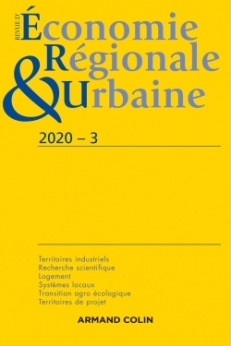
Revue d'économie régionale et urbaine (3/2020)
Pour acheter ce numéro, contactez-nous
Recevez les numéros de l'année en cours et accédez à l'intégralité des articles en ligne.
Nous examinons les déterminants du choix de l’itinéraire d’accès à l’information du logement locatif vacant au Cameroun. Nous démontrons que la dispersion de l’information est à l’origine d’une impossible approche rationnelle des mécanismes du marché immobilier résidentiel dans les contextes urbains marqués par le poids dominant de la production informelle. Nous utilisons un modèle multinomial emboîté à partir duquel nous formalisons les décisions des ménages à travers quatre itinéraires d’information. Le choix de l’itinéraire d’accès à l’information est influencé par les anticipations d’imputation des coûts financiers et d’opportunité liées au temps de recherche, le revenu, le niveau d’éducation et la taille du ménage. Dans un contexte de production informelle des logements, l’accès à l’information se fait à travers trois canaux principaux : les membres de la famille vivant sous le même toit, le réseau social et les intermédiaires immobiliers informels.
We investigate the factors of access itinerary choice to information for vacant rental housing in Cameroon. The theoretical perspective chosen is the modern information analysis. That means search behaviour for rental housing is highlighted under the assumption of imperfect information. The study begins to emphasize four access itineraries to information according actors approached: formal real estate intermediaries, informal real estate intermediaries, social network and family. Then, we look into factors of each itinerary choice by formalizing a nested multinomial model. Data collected provide from a survey of rental housing market across the city of Douala. This study-case shows us that information dispersion disproves the rational approach of residential real estate market mechanisms, in urban context experienced by the weight of informal production. Thus, the access itinerary to information chosen is influenced by anticipations of financial and opportunity costs related to search time, income, education level and household size. Furthermore, in a context of informal housing production, three main ways are used to get information: family members living under the same roof, social networks and informal real estate brokers. The results suggest three policy interventions. First, the implementation of a formal housing production framework would improve the stakeholders coordination and, ultimately, reduce information dispersion. Then, policies should focus to reinforce the diffusion technical capacities of formal real estate agents. Finally, the popularization of new communication tools is required to share information about vacant rental housings.